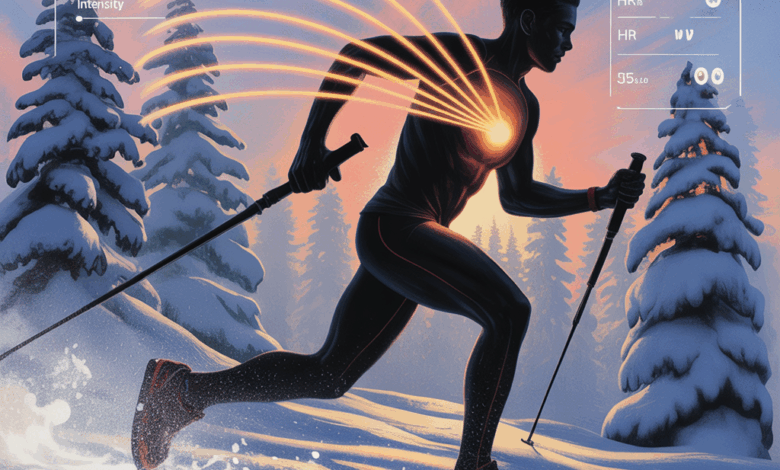How Many Calories Does Snowshoeing Burn? — Real Numbers & Workout Tips

Ever stood at the trailhead on a sparkling winter morning and wondered how hard you’d have to work to torch off that holiday meal? If you love winter walks, you’ve likely asked: how many calories does snowshoeing burn? Snowshoeing is one of those rare activities that feels more like play than exercise — until you check your heart rate and realize you just completed a serious calorie-burning session.
How many calories does snowshoeing burn?
Short answer: it depends. Snowshoeing calorie burn varies by body weight, intensity, terrain, snow depth, and whether you carry a pack. Typical ranges for calories burned per hour are roughly 400–900 kcal/hour. Here’s how to estimate where you fall in that range and why snowshoeing can be a top winter fat-burning workout.
Why the wide range?
Calories are influenced by:
- Body weight — heavier people burn more calories doing the same activity.
- Intensity — a flat, easy trek vs. steep uphill climbs or deep powder makes a big difference.
- Snow conditions — powder forces you to lift your feet more and increases effort.
- Pack weight and poles — carrying a pack or using poles changes muscle recruitment and energy cost.
How to calculate calories burned (simple formula)
Use the MET (Metabolic Equivalent) method for a quick estimate. Snowshoeing ranges from about 6–10+ METs depending on intensity.
Calories burned per minute = MET × body weight in kg × 3.5 / 200
Example calculations:
- Moderate snowshoeing (~7 METs): a 70 kg (154 lb) person burns ~8.6 kcal/min → ~515 kcal/hour.
- Vigorous snowshoeing (~10 METs): same person burns ~12.3 kcal/min → ~740 kcal/hour.
- A 90 kg (200 lb) person at 7 METs burns ~11.1 kcal/min → ~670 kcal/hour.
Factors that increase calories burned on a snowshoe trek
- Uphill climbs and steeper gradients
- Deep, fresh powder vs. packed snow
- Longer stride and increased pace
- Carrying a loaded backpack
- Interval-style efforts (sprints or hill repeats)
Real-world examples and workout variations
Mix these into your winter routine to maximize calorie burn and fitness gains.
1. The steady-state fat burner (45–90 minutes)
Choose rolling terrain at a brisk, conversational pace. Aim for 60–75% of your max heart rate. Good for long, scenic days — expect ~400–700 kcal/hour depending on your weight.
2. Hill repeat intervals (30–60 minutes)
Warm up 10 minutes, then do 6–10 repeats of 2–4 minutes uphill at high effort with easy walk-back recovery. This high-intensity interval training (HIIT) on snowshoe boosts calorie burn and afterburn effect (EPOC).
3. Loaded-trail conditioning (1–3 hours)
Carry a moderate pack (10–20 lb) on mixed terrain. Useful for hikers, backpackers, and anyone preparing for backcountry trips. Adds muscle engagement and increases calories burned substantially.
4. Snowshoe circuit (bodyweight + cardio)
- 10 minutes easy snowshoe
- 10 bodyweight reps at trailhead (push-ups, squats, lunges)
- 5 minutes tempo snowshoe
- Repeat 3–5 times.
This combines strength and cardio for a full-body winter workout and elevates metabolic demand.
Practical fitness tips, technique, and safety
- Use poles to engage your upper body and increase calories burned.
- Shorter, quicker steps in deep snow save energy — but push your tempo for higher intensity.
- Layer clothing for moisture control: base layer, insulating mid-layer, and windproof shell.
- Hydrate — cold reduces thirst cues but you still sweat and lose fluids.
- Pack snacks with carbs + protein for longer outings (e.g., trail mix + jerky or a sandwich).
- Check avalanche conditions and route safety for backcountry travel; know basic winter navigation and first aid.
Nutrition and recovery for winter workouts
Fuel appropriately to support calorie burn without losing muscle. Pre-activity carbs (banana, oatmeal) and post-activity protein (20–30g) aid recovery. For multi-hour treks, eat small snacks every 45–60 minutes and prioritize warming foods and fluids after the workout to restore body temperature and glycogen.
Frequently Asked Questions
For beginners moving at an easy to moderate pace, expect roughly 350–550 kcal/hour depending on weight and snow conditions. As fitness and intensity increase, so do calorie burn rates.
Yes — snowshoeing is an efficient calorie burner and can be part of a successful weight-loss plan when combined with a balanced diet. The activity engages large muscle groups, improves cardiovascular fitness, and can be sustained for long durations.
Yes. Poles engage upper body muscles and increase overall power, while backpacks raise the workload. Both increase energy expenditure noticeably, especially during climbs or deep snow.
Conclusion — Ready to track your next snowshoe session?
So, how many calories does snowshoeing burn? Depending on your weight, terrain, and effort, expect approximately 400–900 kcal per hour. It’s a versatile winter workout — from leisurely fitness hikes to intense interval climbs — that builds strength, stamina, and burns serious calories. Try one of the workout variations above this weekend, track your heart rate or use a calorie estimator, and compare results.
Want more structured plans? Check out our workout routines and nutrition guides for winter training ideas, or browse wellness tips to keep your season safe and strong. Share your favorite snowshoe route or post-workout photo — get out, move, and let the snow work for your fitness goals!
Call to action: Lace up, strap on your snowshoes, and try a 45-minute tempo session this weekend — then log the calories and see how you progressed. Want a custom snowshoe workout? Reply with your weight and goals and I’ll draft one for you.





